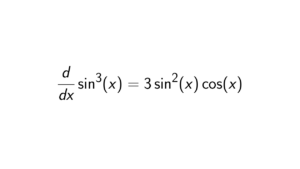Definition 1. Let G be a group. The order of an element x \in G is the smallest positive integer n such that x^{n} = e, where e is the identity element.
We can show several examples depending on which order the group G is defined. We take here for example the additive group (\mathbb{Z}/10\mathbb{Z}, +), the multiplicative group ((\mathbb{Z}/10\mathbb{Z})^{\times}, \times) and the symmetric group S_3.
Example 1. Take the additive group (\mathbb{Z}/10\mathbb{Z}, +). Here the identity element is e = 0. Further, we need to check for which x \in \mathbb{Z}/10\mathbb{Z} we get that xn = 0 for n \in \mathbb{Z}/10\mathbb{Z}. So we get for each element the next order:
- For 0, we get \{0 \ | \ n \in \mathbb{Z}/10\mathbb{Z}\} = \{0\}. So we have that the order of 0 is 1.
- For 1, we get \{n \ | \ n \in \mathbb{Z}/10\mathbb{Z}\} = \{1,2,3,4,5,6,7,8,9,0\}. So the order of 1 is 10.
- For 2, we get \{2n \ | \ n \in \mathbb{Z}/10\mathbb{Z}\} = \{2,4,6,8,0\}. So the order of 2 is 5.
- For 3, we get \{3n \ | \ n \in \mathbb{Z}/10\mathbb{Z}\} = \{3,6,9,2,5,8,1,4,7,0\}. So the order of 3 is 10.
- For 4, we get \{4n \ | \ n \in \mathbb{Z}/10\mathbb{Z}\} = \{4,8,2,6,0\}. So the order of 4 is 5.
- For 5, we get \{5n \ | \ n \in \mathbb{Z}/10\mathbb{Z}\} = \{5,0\}. So the order of 5 is 2.
- For 6, we get \{6n \ | \ n \in \mathbb{Z}/10\mathbb{Z}\} = \{6,2,8,4,0\}. So the order of 6 is 5.
- For 7, we get \{7n \ | \ n \in \mathbb{Z}/10\mathbb{Z}\} = \{7,4,1,8,5,2,9,6,3,0\}. So the order of 7 is 10.
- For 8, we get \{8n \ | \ n \in \mathbb{Z}/10\mathbb{Z}\} = \{8,6,4,2,0\}. So the order of 8 is 5.
- For 9, we get \{9n \ | \ n \in \mathbb{Z}/10\mathbb{Z}\} = \{9,8,7,6,5,4,3,2,1,0\}. So the order of 9 is 10.
- For 1, we get \{1^n \ | \ n \in \mathbb{Z}/10\mathbb{Z}\} = \{1\}. So the order of 1 is 1.
- For 3, we get \{3^n \ | \ n \in \mathbb{Z}/10\mathbb{Z}\} = \{3^1,3^2,3^3,3^4\} = \{3,9,7,1\}. So the order of 3 is 4.
- For 7, we get \{7^n \ | \ n \in \mathbb{Z}/10\mathbb{Z}\} = \{7^1,7^2,7^3,7^4\} = \{7,9,3,1\}. So the order of 7 is 4.
- For 9, we get \{9^n \ | \ n \in \mathbb{Z}/10\mathbb{Z}\} = \{9^1,9^2\} = \{9,1\}. So the order of 9 is 2.
\begin{equation*}
S_3 = \{e,(12),(13),(23),(123),(132)\}.
\end{equation*}
